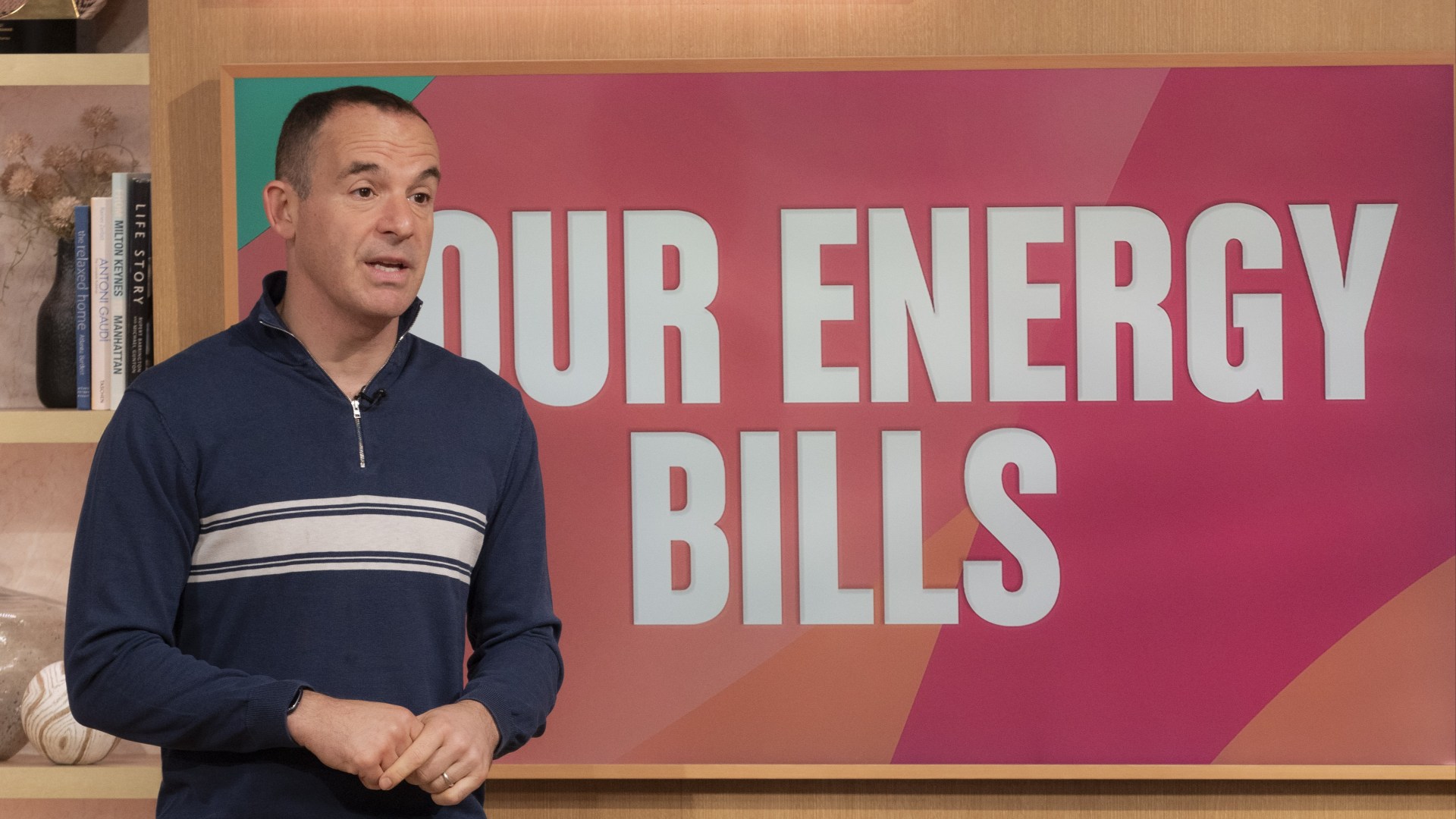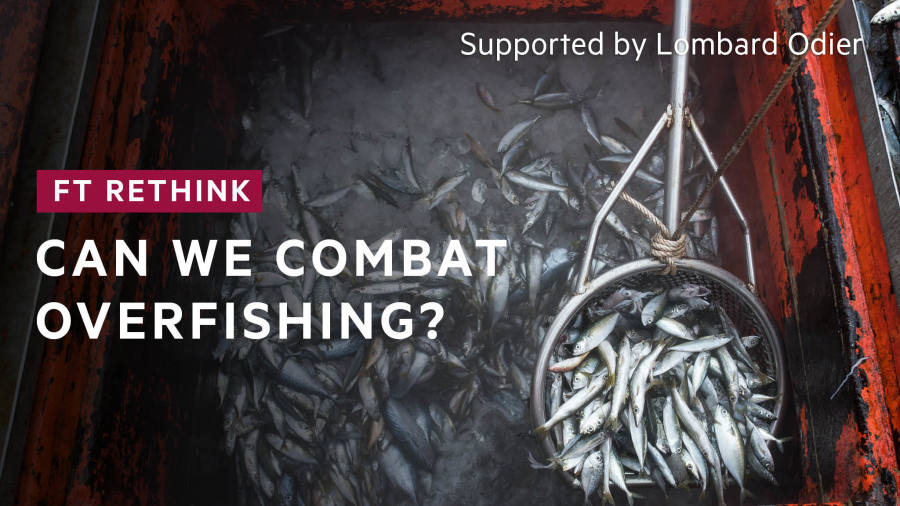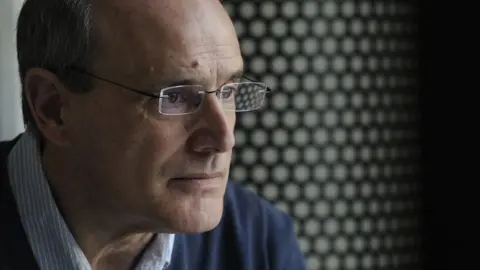News
Maldives twin baby joy ends with doctors telling Yorkshire mum 'grieve later'


Harrogate mum speaks out about TTS for Baby Loss Awareness Week
Money
Martin Lewis issues warning for 28million households to ‘act ASAP’ and save on energy bills as suppliers pull deals

MARTIN Lewis has issued a warning to millions of households who could slash their energy bills.
Last week, the energy price cap jumped from £1,568 to £1,717 a year.
This means that bills have risen by 10%, and the average household bill is up by more than £12 a month, or £149 a year.
However, Martin Lewis said: “Last week, the energy pants price cap, which dictates the rate eight in 10 homes in Eng, Scotland and Wales pay, rose by 10%
“Yet, for now, the deals you can compare and switch to are far cheaper.
“That’s why last week I called the current cap a pants cap, as, stay on it, and you’ll miss out on savings.”
Around 28million households are on standard variable tariffs, which are affected by the price cap, according to Ofgem.
However, there are several fixed energy deals that beat these tariffs.
The founder of MoneySavingExpert.com said: “A fix gives you peace of mind that the rate won’t change for a set time.
“Currently, a host of one-year fixes hugely undercut the price cap.
“Yet world turmoil has hit oil prices, and there’s potential knock-on to energy prices, so we’ve already seen three of last week’s cheapest fixes pulled and replaced with more expensive ones.”
EDF Energy also pulled the cheapest fixed deal on the market on Monday.
Those who signed up for the Essentials Fixed 1Yr Oct25v3 tariff were promised savings of £163 a year.
As a result, Martin added: “So for the short term, the mood music seems to say fixing ASAP is the safest route.”
The cheapest fixed deal available right now can still save the average household £162 a year.
How do fixed deals work?
Fixed deals work to protect customers from bill hikes if Ofgem were to increase the price cap in the future.
Customers on their supplier’s standard variable tariff see their energy prices change every three months, as these are tied to Ofgem’s price cap.
However, those who lock into a fixed energy deal are charged the same gas and electricity rates throughout the contract’s term.
Of course, doing so carries a slight risk of you paying more than those on the standard variable tariff if Ofgem’s energy price cap were to fall within your deal’s term.
The price cap is reviewed every three months in Oct, Jan, April and July, and can go up or down depending on what’s happening in the wholesale energy market.
Since October 1, those on the standard variable tariff (SVT) have had their rates capped by Ofgem at the following levels:
- 5.48p per kilowatt hour (p/kWh) for gas
- 22.36p per kWh for electricity
- A standing charge of 31.66p per day for gas
- A standing charge of 60.99p per day for electricity
- For a typical household that uses an average of 11,500kWh of gas and 2,700kWh of electricity every year, these rates will cap bills at roughly £1,717 .
As this is only an estimate for a typical household, if you use more energy, you’ll pay more.
But if you’re offered a fix that’s cheaper than October’s price cap, it’s always worth considering.
How can I check future price cap predictions?
EDF Energy has launches a brand new Ofgem price cap prediction tool on its website.
The energy company updates the tool with new information about changes to the cap on energy prices every Tuesday.
It also includes advice on how this affects your energy tariff choices.
You can find out more by visiting edfenergy.com/gas-and-electricity/price-cap-predictions.
Which suppliers are offering the best-fixed deals?
Outfox the Market is currently offering the cheapest deal on the open market right now.
Its Fix’d Dual Oct24 v5.0 tariff costs a typical household £1,555 a year.
This means it is £162 cheaper than Ofgem’s October price cap.
It comes with a £25 exit fee per fuel or £50 if you lock in with a dual fuel tariff.
British Gas‘ The Fixed Tariff v5 tariff matches the Outfox the Market deal, but it comes with a £50 exit dee per fuel.
Octopus Energy’s 12M Fixed October 2024 v1 costs £1,566 a year – £151 less than Ofgem’s October price cap.
This deal also comes with no exit fees, so customers can ditch and switch suppliers at any time.
Remember to always compare prices before switching, as energy tariffs vary widely, and costs differ depending on where you live.
Outfox the Market, Ovo Energy and British Gas fixes are available to those with or without a smart meter.
What are the alternatives?
Customers unwilling to commit to long-term fixed energy deals may want to consider flexible tariffs.
Kara Gammell, personal finance expert at comparison site Money Supermarket Group, says: “These will almost always be at or below the price cap.”
For example, E.ON Next‘s Pledge variable tariff offers a fixed discount of around three per cent on the price cap rates for 12 months.
It will save the average household around £50 a year but comes with a £50 exit fee if you switch before the year ends.
The deal is available to both new and existing customers.
EDF Energy’s Ensure Tracker works in a similar way and offers a £50 discount off the price cap’s standing charges for 12 months.
For a bigger reward but at a higher risk, Octopus Energy offers two variable tariffs which track wholesale gas and electricity costs.
Customers on the Octopus Tracker see their prices change daily, but unit rates have remained consistently lower than the price cap in recent months.
The Agile Octopus tariff works similarly to the Octopus Tracker, but the main difference is that the former’s prices change every half hour.
Remember that those wishing to switch to any of these tracker tariffs must have a smart meter.
What energy bill help is available?
THERE’S a number of different ways to get help paying your energy bills if you’re struggling to get by.
If you fall into debt, you can always approach your supplier to see if they can put you on a repayment plan before putting you on a prepayment meter.
This involves paying off what you owe in instalments over a set period.
If your supplier offers you a repayment plan you don’t think you can afford, speak to them again to see if you can negotiate a better deal.
Several energy firms have grant schemes available to customers struggling to cover their bills.
But eligibility criteria varies depending on the supplier and the amount you can get depends on your financial circumstances.
For example, British Gas or Scottish Gas customers struggling to pay their energy bills can get grants worth up to £2,000.
British Gas also offers help via its British Gas Energy Trust and Individuals Family Fund.
You don’t need to be a British Gas customer to apply for the second fund.
EDF, E.ON, Octopus Energy and Scottish Power all offer grants to struggling customers too.
Thousands of vulnerable households are missing out on extra help and protections by not signing up to the Priority Services Register (PSR).
The service helps support vulnerable households, such as those who are elderly or ill, and some of the perks include being given advance warning of blackouts, free gas safety checks and extra support if you’re struggling.
Get in touch with your energy firm to see if you can apply.
News
Miranda Hart reveals she got married at 51 and has had Lyme disease

Miranda Hart has said “getting married in mid-life is a full injection of joy and fun”, after revealing she’s tied the knot at the age of 51.
The comedian and actreess has married a man she met during the pandemic.
“It’s the best!” she said. “He’s my best friend, we have the best fun… The fact that I could meet somebody – it’s not a rom-com story but it’s hope, and that’s why I think, whatever situation you’re in, there’s always hope that things really do change.”
She discusses the relationship in her new book, and also opens up about her struggle with chronic fatigue after being diagnosed with Lyme disease.
The star, who is best known for her BBC sitcom Miranda, told the BBC it had been a “tough few years”, but she was “thrilled” by her marriage, and was “really keen to get back to some silliness”.
“It’s so nice to be back in the television, I feel very excited to be here,” she told The One Show.
“Because once you’ve been bed and housebound with a fatigue-based chronic illness that takes a long time to be diagnosed – which sadly I know a lot of people will know – you miss life a lot. So I’m thrilled to be sitting here.”
Lyme disease is a bacterial infection which can spread to humans via a tick bite.
The disease can be easily treated if detected and diagnosed early, but for a long time, the actor didn’t know what was causing her to feel unwell.
It often starts with a circular rash and can lead to flu-like symptoms, nerve pain and sometimes a droop (facial palsy) on one, or both, sides of the face.
For most people, symptoms are short-term and can be alleviated by a course of antibiotics, but a minority go on to suffer more long-term symptoms, including chronic tiredness and unexplained neurological issues.
The star said she found it incredibly hard being confined to her home for such a long period.
“Unless you’ve had fatigue [like that], you don’t understand what literally not getting off the floor is,” Hart told BBC Radio 4’s Today programme.
“I was basically bed-bound – and housebound. There’d be times where I’d look at a glass of water, and think ‘I don’t know how to pick that up’.
“All anyone wants is to be heard, accepted, loved and seen… and when you’re not – particularly in a medical situation – it’s the worst.”
Part of why she’s written the book was to share her discovery of what helped her recovery, she said.
“I thought I need to research this whole wellness expertise and dialogue that’s out there, but I was at bed at home alone, the doctors didn’t know what to do with me and I couldn’t have a cold plunge or go on a yoga retreat.
“So I thought what are the universal truths? So I did years of research, when I felt able to, and in the book there are 10 keys, which I call my treasures, to living well.
“And they’ve really genuinely [helped]. I feel like despite the suffering it came from, that I’m living a life of joy and meaning and fulfilment in a way I never have before.
“I feel like I know who I honestly am, in a way that I never knew I needed to, which is just incredible.”
When she finally received her diagnosis, she was able to trace the condition back to her teenage years.
“Probably when I was about 14 or 15, I got a tick-borne illness… and that’s when my symptoms started,” she recalled.
“It was such a relief. I mean, being misunderstood and misjudged is one of the hardest things about these kind of conditions. For sure.”
The actress, who began her career performing at the Edinburgh Fringe in the early 2000s, remains best known for her portrayal of the unlucky-in-love and socially awkward Miranda from her self-titled TV sitcom which ran from 2009 until 2015 .
Having taken time out to rest and recover, and with her new husband by her side, Hart suggested she finally felt well enough to start taking on new projects.
“I’m really keen to get back to some silliness now, I miss the studio floor, I miss laughter.”
After appearing on The One Show, Hart said she found her fans’ delight at her marriage “really very touching”.
Posting a video on X, she said: “I’ve got my best friend to do life with and it’s wonderful, and I’m also utterly thrilled to be back in telly land and having a book out, so thanks so much for all your support.”
Hart ended the video high-fiving her husband – only his hand was visible in the clip – which she joked was an “exclusive”.
She hasn’t revealed his identity, and said she wouldn’t say how they met until the book is published because it is “a little bit of a twist”.
Her book, titled I Haven’t Been Entirely Honest With You, is published on Thursday, 10 October.
Travel
Marriott adds The Link Seoul to Tribute Portfolio
New hotel opening in Seoul’s Sindorim district
Continue reading Marriott adds The Link Seoul to Tribute Portfolio at Business Traveller.
Business
Is it possible to sustainably satisfy the world’s hunger for fish?

You can enable subtitles (captions) in the video player
So, Susannah, what problem are we mulling over today?
Can we solve our overfishing problem and sustainably satisfy the world’s hunger for fish? According to the UN’s Food and Agriculture Organisation, or the FAO, in 2020 the International Trade of Fisheries and Aquaculture Products was worth around $150bn. But the FAO now classifies a third of the world’s fishery stocks as overfished, which means they’re being fished beyond sustainable levels.
So what can be done to combat overfishing? Firstly, fishing subsidies which incentivise overfishing are a huge problem. Now, these are subsidies from governments for things such as fuel, fishing gear, and new vessels. An academic study from 2019 estimated that these government payouts to the fishing industry totalled around $22.2bn.
There has been some progress in limiting subsidies, especially those that end up supporting unregulated fishing. In June 2022, the World Trade Organisation agreement on fishery subsidies was signed. The goal in mind is to prohibit subsidy support for illegal, unregulated, and unreported fishing, and limiting fishing of overfished stocks. But it’s only due to come into force when two-thirds of WTO members ratify it. That means that 110 countries have to ratify it. But as of the 1st of July of this year, only 78 countries have done so.
So what other measures could we be looking at? Firstly, we could be doing more to protect essential predator species. For example, it’s estimated by the WWF that one third of shark species face extinction. Predator species like sharks play a crucial role in the ocean ecosystem and food chain.
Next, to avoid bycatch, the FAO has suggested placing the top end of fishing nets two metres lower in the water. Now, this has been shown to effectively reduce the mortality of marine mammal bycatch by 98 per cent in places like the Indian Ocean. Finally, the growth of aquaculture, which is fish farmed in pens or ponds, could ease some of the pressure on wild stocks.
Today, more than 50 per cent of the fish that we eat is farmed. Of course, these measures that I’ve been speaking about come with their own challenges. If we take aquaculture, for example, critics say aquaculture’s practises for sourcing feed harm food security in poorer countries. That’s because it hoovers up small species of fish, which the local communities rely on for food in order to make fishmeal for the aquaculture farms.
Another huge challenge facing authorities is simply the sheer number of fishing boats in the world, many of which are unregulated. Now, according to the FAO, illegal or unregulated fishing accounts for some 20 per cent of what’s caught, or around 26mn tonnes of fish every year. Regulating fisheries has always been a highly political issue. But no matter how difficult the problem of overfishing is to solve, it cannot be ignored.
Money
Editor’s View: If financial advice is so rewarding, why don’t more people know about it?


If there’s one thing that consistently worries the financial advice sector, it’s the looming capacity crunch.
The statistics are well known: a recent Investec survey found 49% of financial advisers and planners intended to retire within the next five years, while 35% aimed to retire by age 50. And this is only the latest in a long line of such findings.
So, why aren’t these numbers being replaced? Again, it’s a familiar story: in some cases, young people see financial advice as not relevant to them, as something “stuffy and old-fashioned”, in the words of the LIBF’s John Somerville.
These initiatives are a great starting point, but they should act as a spur for a much bigger push
Others may feel, incorrectly, that they lack the necessary skills. Or they are put off by the routes to qualification, seeing them as arduous and expensive. Or the advice firms themselves are reluctant to invest in new talent.
But the overwhelming problem is a lack of awareness. According to the CII’s Claire Bishop, “Often, it’s just not something that’s on the radar of people at school, university or college.” The same is true for careers advisers.
This is despite the opportunities financial advice offers in terms of role diversity, opportunity, location, salary and self-employment. It is a sector that suits a wide range of talent and abilities; as Bishop puts it: “There’s an assumption that it’s all about maths. And it’s not. It’s about helping people and understanding people.”
All of the schemes agree that collaboration is vital
And, while no one would describe it as an easy profession, research last year by Dynamic Planner revealed that nine in 10 advisers under 30 would recommend financial advice as a career. There aren’t many other professions that could make that claim.
So, it’s time the sector pulled together and did more to promote itself. If financial advice is so rewarding, why don’t more people know about it? And, if everyone in the profession is agreed that we have a problem, why not collaborate more on the solutions?
Fortunately, there are plenty of initiatives out there that are doing just that. This month’s cover feature highlights four of them: CII’s virtual work-experience programme with Springpod; the New Talent Alliance; The Verve Foundation’s ‘We Are Change’ initiative; and Future Financial Adviser.
In some cases, young people see financial advice as not relevant to them, as something stuffy and old-fashioned
All of these are promoting opportunities to young people and assisting them on their journey. All of them are helping to push financial advice into the spotlight. And all of them agree that collaboration is vital.
However, we need to do more. These initiatives are a great starting point, but they should act as a spur for a much bigger push.
So, if you know of a project that is addressing the adviser gap, or you have any thoughts that aren’t addressed in our feature, we’d love to hear from you!
Tom Browne is editor of Money Marketing. Contact him at: tom.browne@moneymarketing.co.uk
This article featured in the October 2024 edition of Money Marketing.
If you would like to subscribe to the monthly magazine, please click here.
News
NI health transformation more needed than ever

 Getty Images
Getty ImagesProfessor Raphael Bengoa has returned to Northern Ireland and said the need for transforming health and social care, backed by sustained budgets, is even more pressing than ever.
Prof Bengoa headed the panel which produced a 2016 report which set out the need for health transformation.
His one-day visit is the final piece in the Department of Health’s reset jigsaw which has recently seen the publication of the long-awaited report on hospital reform and other plans on rebooting health service reform.
Ahead of speaking at a conference, in the La Mon Hotel, he said he welcomed the opportunity to return and to see that health transformation remains an “overriding priority”.
‘Major struggles on several fronts’
 Professor Raphael Bengoa
Professor Raphael BengoaThe audience will include health professionals from hospitals to community care.
He said he was aware of the challenges that the health service had faced over the period since 2016.
“It is by no means unique in that regard. Right across Europe, there are major struggles on several fronts,” he said.
“These include balancing short-term pressures with long-term reform needs, dealing with growing demand and greater patient complexity, and recovering from the impact of the COVID-19 pandemic,” he said.
The conference will hear more about what’s happening in the community with presentations from the Community Pharmacy, Integrated Care in the Community and Multi-Disciplinary Teams – a model of care which should bolster support for GPs including input from physiotherapists and social workers.
The Health Minister said the Bengoa visit is about “rebooting the reform agenda”.
“Systems not Structures was about much more than our hospitals. It’s about fundamentally rebalancing provision to provide more care at community level, to focus on prevention rather than treatment, and to help people manage conditions and live long healthy lives,” said Mike Nesbitt.
“Achieving this shift is the work of a generation,” the minister added.
Analysis: How can we transform with tight budgets?
Transformation, has been slow and low key compared with that set out in 2016.
Northern Ireland’s stop, start government, the pandemic and lack of recurrent budgets are, without a doubt, partly to blame but the lack of major decision making and imagination about how to do things differently with the funding available cannot be ignored.
The big question for the professor will be how do you transform and be radical when all services including those in hospital are stretched and budgets tight?
There was the publication of significant reports around general emergency surgery, which separated planned from emergency surgery.
These opened the wider debate around the need for transformation to protect patients to continue providing non-emergency surgery.
The creation of surgical hubs on some hospital sites followed to tackle waiting lists.
General Practice has said its funding has been cut and practices have closed which social care remains the poor relation.
Reality check
 Getty Images
Getty ImagesThe conference will also hear about tackling health inequalities, which is something Nesbitt has said he wants to prioritise.
Nesbitt said reconfiguring hospital services remains an important part of the overall jigsaw – critics have said the plan contained in Hospitals – creating a network for Better Outcomes, which is now out for public consultation lacked detail and did not go far enough about reducing Northern Ireland’s sprawling hospital network.
Instead of closing hospitals, which is not a vote winner, the department is removing some services from hospitals and centralising them in one location instead.
This means some people must travel further to receive surgery.
As in 2016, there is a more positive vibe coming from the front-line health services.
Pay deals are slowly getting across the line and there is evidence of more joined up thinking between the health trusts.
Also, the minister has said he is the man to the make the “difficult calls” and when he steps down in 2027 he said that he should be held to account.
Wednesday should not be an exercise in back slapping and cheerleading but instead a reality check and planning how to move forward.
The professor pulled it out of the bag eight years ago.
Let’s hope the former Basque country minister can reignite the debate and encourage Nesbitt to leave a legacy that will make a real difference.
-

 Womens Workouts2 weeks ago
Womens Workouts2 weeks ago3 Day Full Body Women’s Dumbbell Only Workout
-

 Science & Environment3 weeks ago
Science & Environment3 weeks agoHow to unsnarl a tangle of threads, according to physics
-

 Science & Environment3 weeks ago
Science & Environment3 weeks agoHyperelastic gel is one of the stretchiest materials known to science
-

 Technology3 weeks ago
Technology3 weeks agoWould-be reality TV contestants ‘not looking real’
-

 Science & Environment3 weeks ago
Science & Environment3 weeks ago‘Running of the bulls’ festival crowds move like charged particles
-

 Science & Environment3 weeks ago
Science & Environment3 weeks agoMaxwell’s demon charges quantum batteries inside of a quantum computer
-

 News2 weeks ago
News2 weeks agoOur millionaire neighbour blocks us from using public footpath & screams at us in street.. it’s like living in a WARZONE – WordupNews
-

 Science & Environment3 weeks ago
Science & Environment3 weeks agoSunlight-trapping device can generate temperatures over 1000°C
-
News3 weeks ago
the pick of new debut fiction
-

 Science & Environment3 weeks ago
Science & Environment3 weeks agoHow to wrap your mind around the real multiverse
-

 Science & Environment3 weeks ago
Science & Environment3 weeks agoQuantum ‘supersolid’ matter stirred using magnets
-

 Science & Environment3 weeks ago
Science & Environment3 weeks agoLiquid crystals could improve quantum communication devices
-

 Science & Environment3 weeks ago
Science & Environment3 weeks agoITER: Is the world’s biggest fusion experiment dead after new delay to 2035?
-

 Science & Environment3 weeks ago
Science & Environment3 weeks agoQuantum forces used to automatically assemble tiny device
-

 Science & Environment3 weeks ago
Science & Environment3 weeks agoPhysicists are grappling with their own reproducibility crisis
-

 Science & Environment3 weeks ago
Science & Environment3 weeks agoWhy this is a golden age for life to thrive across the universe
-

 News3 weeks ago
News3 weeks agoYou’re a Hypocrite, And So Am I
-

 Sport3 weeks ago
Sport3 weeks agoJoshua vs Dubois: Chris Eubank Jr says ‘AJ’ could beat Tyson Fury and any other heavyweight in the world
-

 Science & Environment3 weeks ago
Science & Environment3 weeks agoCaroline Ellison aims to duck prison sentence for role in FTX collapse
-
Business2 weeks ago
Eurosceptic Andrej Babiš eyes return to power in Czech Republic
-

 Science & Environment3 weeks ago
Science & Environment3 weeks agoTime travel sci-fi novel is a rip-roaringly good thought experiment
-

 Science & Environment3 weeks ago
Science & Environment3 weeks agoLaser helps turn an electron into a coil of mass and charge
-

 Science & Environment3 weeks ago
Science & Environment3 weeks agoNuclear fusion experiment overcomes two key operating hurdles
-

 Science & Environment3 weeks ago
Science & Environment3 weeks agoNerve fibres in the brain could generate quantum entanglement
-

 Technology2 weeks ago
Technology2 weeks ago‘From a toaster to a server’: UK startup promises 5x ‘speed up without changing a line of code’ as it plans to take on Nvidia, AMD in the generative AI battlefield
-

 Football2 weeks ago
Football2 weeks agoFootball Focus: Martin Keown on Liverpool’s Alisson Becker
-

 Science & Environment3 weeks ago
Science & Environment3 weeks agoRethinking space and time could let us do away with dark matter
-

 News3 weeks ago
News3 weeks ago▶️ Hamas in the West Bank: Rising Support and Deadly Attacks You Might Not Know About
-

 Science & Environment2 weeks ago
Science & Environment2 weeks agoX-rays reveal half-billion-year-old insect ancestor
-

 MMA2 weeks ago
MMA2 weeks agoConor McGregor challenges ‘woeful’ Belal Muhammad, tells Ilia Topuria it’s ‘on sight’
-

 News3 weeks ago
News3 weeks ago▶️ Media Bias: How They Spin Attack on Hezbollah and Ignore the Reality
-
Business2 weeks ago
Should London’s tax exiles head for Spain, Italy . . . or Wales?
-

 Science & Environment3 weeks ago
Science & Environment3 weeks agoA slight curve helps rocks make the biggest splash
-

 News3 weeks ago
News3 weeks agoNew investigation ordered into ‘doorstep murder’ of Alistair Wilson
-

 News3 weeks ago
News3 weeks agoIsrael strikes Lebanese targets as Hizbollah chief warns of ‘red lines’ crossed
-

 Science & Environment3 weeks ago
Science & Environment3 weeks agoFuture of fusion: How the UK’s JET reactor paved the way for ITER
-

 Technology2 weeks ago
Technology2 weeks agoQuantum computers may work better when they ignore causality
-

 Science & Environment3 weeks ago
Science & Environment3 weeks agoA new kind of experiment at the Large Hadron Collider could unravel quantum reality
-

 Science & Environment3 weeks ago
Science & Environment3 weeks agoUK spurns European invitation to join ITER nuclear fusion project
-

 Science & Environment3 weeks ago
Science & Environment3 weeks agoWhy we need to invoke philosophy to judge bizarre concepts in science
-

 CryptoCurrency3 weeks ago
CryptoCurrency3 weeks agoCardano founder to meet Argentina president Javier Milei
-

 News2 weeks ago
News2 weeks agoWhy Is Everyone Excited About These Smart Insoles?
-

 Science & Environment2 weeks ago
Science & Environment2 weeks agoMeet the world's first female male model | 7.30
-

 Technology2 weeks ago
Technology2 weeks agoGet ready for Meta Connect
-

 Health & fitness2 weeks ago
Health & fitness2 weeks agoThe 7 lifestyle habits you can stop now for a slimmer face by next week
-

 Health & fitness3 weeks ago
Health & fitness3 weeks agoThe maps that could hold the secret to curing cancer
-

 CryptoCurrency3 weeks ago
CryptoCurrency3 weeks agoLow users, sex predators kill Korean metaverses, 3AC sues Terra: Asia Express
-
News3 weeks ago
The Project Censored Newsletter – May 2024
-
Politics3 weeks ago
UK consumer confidence falls sharply amid fears of ‘painful’ budget | Economics
-

 Womens Workouts3 weeks ago
Womens Workouts3 weeks agoBest Exercises if You Want to Build a Great Physique
-

 Womens Workouts3 weeks ago
Womens Workouts3 weeks agoEverything a Beginner Needs to Know About Squatting
-

 News2 weeks ago
News2 weeks agoFour dead & 18 injured in horror mass shooting with victims ‘caught in crossfire’ as cops hunt multiple gunmen
-

 Womens Workouts2 weeks ago
Womens Workouts2 weeks ago3 Day Full Body Toning Workout for Women
-

 Technology2 weeks ago
Technology2 weeks agoRobo-tuna reveals how foldable fins help the speedy fish manoeuvre
-

 Sport1 week ago
Sport1 week agoWatch UFC star deliver ‘one of the most brutal knockouts ever’ that left opponent laid spark out on the canvas
-

 Sport3 weeks ago
Sport3 weeks agoUFC Edmonton fight card revealed, including Brandon Moreno vs. Amir Albazi headliner
-

 CryptoCurrency3 weeks ago
CryptoCurrency3 weeks agoEthereum is a 'contrarian bet' into 2025, says Bitwise exec
-

 Health & fitness3 weeks ago
Health & fitness3 weeks agoThe secret to a six pack – and how to keep your washboard abs in 2022
-
Business3 weeks ago
JPMorgan in talks to take over Apple credit card from Goldman Sachs
-

 Science & Environment3 weeks ago
Science & Environment3 weeks agoQuantum time travel: The experiment to ‘send a particle into the past’
-

 Science & Environment3 weeks ago
Science & Environment3 weeks agoBeing in two places at once could make a quantum battery charge faster
-

 Technology3 weeks ago
Technology3 weeks agoThe ‘superfood’ taking over fields in northern India
-

 Science & Environment3 weeks ago
Science & Environment3 weeks agoA tale of two mysteries: ghostly neutrinos and the proton decay puzzle
-

 CryptoCurrency3 weeks ago
CryptoCurrency3 weeks agoBitcoin miners steamrolled after electricity thefts, exchange ‘closure’ scam: Asia Express
-

 CryptoCurrency3 weeks ago
CryptoCurrency3 weeks agoDorsey’s ‘marketplace of algorithms’ could fix social media… so why hasn’t it?
-

 CryptoCurrency3 weeks ago
CryptoCurrency3 weeks agoDZ Bank partners with Boerse Stuttgart for crypto trading
-

 CryptoCurrency3 weeks ago
CryptoCurrency3 weeks agoBitcoin bulls target $64K BTC price hurdle as US stocks eye new record
-

 CryptoCurrency3 weeks ago
CryptoCurrency3 weeks agoBlockdaemon mulls 2026 IPO: Report
-

 TV2 weeks ago
TV2 weeks agoCNN TÜRK – 🔴 Canlı Yayın ᴴᴰ – Canlı TV izle
-

 Science & Environment2 weeks ago
Science & Environment2 weeks agoCNN TÜRK – 🔴 Canlı Yayın ᴴᴰ – Canlı TV izle
-

 Servers computers2 weeks ago
Servers computers2 weeks agoWhat are the benefits of Blade servers compared to rack servers?
-

 News2 weeks ago
News2 weeks agoUS Newspapers Diluting Democratic Discourse with Political Bias
-

 Technology2 weeks ago
Technology2 weeks agoThe best robot vacuum cleaners of 2024
-

 News3 weeks ago
News3 weeks agoChurch same-sex split affecting bishop appointments
-

 Politics3 weeks ago
Politics3 weeks agoTrump says he will meet with Indian Prime Minister Narendra Modi next week
-

 Science & Environment3 weeks ago
Science & Environment3 weeks agoHow one theory ties together everything we know about the universe
-

 News3 weeks ago
News3 weeks agoBrian Tyree Henry on voicing young Megatron, his love for villain roles
-

 Science & Environment3 weeks ago
Science & Environment3 weeks agoTiny magnet could help measure gravity on the quantum scale
-

 Science & Environment3 weeks ago
Science & Environment3 weeks agoHow do you recycle a nuclear fusion reactor? We’re about to find out
-

 CryptoCurrency3 weeks ago
CryptoCurrency3 weeks agoDecentraland X account hacked, phishing scam targets MANA airdrop
-

 CryptoCurrency3 weeks ago
CryptoCurrency3 weeks agoRedStone integrates first oracle price feeds on TON blockchain
-

 CryptoCurrency3 weeks ago
CryptoCurrency3 weeks ago‘No matter how bad it gets, there’s a lot going on with NFTs’: 24 Hours of Art, NFT Creator
-
Business3 weeks ago
Thames Water seeks extension on debt terms to avoid renationalisation
-
Business3 weeks ago
How Labour donor’s largesse tarnished government’s squeaky clean image
-
Politics3 weeks ago
‘Appalling’ rows over Sue Gray must stop, senior ministers say | Sue Gray
-

 News3 weeks ago
News3 weeks agoBrian Tyree Henry on voicing young Megatron, his love for villain roles
-

 CryptoCurrency3 weeks ago
CryptoCurrency3 weeks agoCoinbase’s cbBTC surges to third-largest wrapped BTC token in just one week
-

 MMA3 weeks ago
MMA3 weeks agoRankings Show: Is Umar Nurmagomedov a lock to become UFC champion?
-

 Travel2 weeks ago
Travel2 weeks agoDelta signs codeshare agreement with SAS
-

 Politics2 weeks ago
Politics2 weeks agoHope, finally? Keir Starmer’s first conference in power – podcast | News
-
Business1 week ago
Ukraine faces its darkest hour
-

 Technology3 weeks ago
Technology3 weeks agoiPhone 15 Pro Max Camera Review: Depth and Reach
-

 CryptoCurrency3 weeks ago
CryptoCurrency3 weeks agoCrypto scammers orchestrate massive hack on X but barely made $8K
-

 CryptoCurrency3 weeks ago
CryptoCurrency3 weeks agoSEC asks court for four months to produce documents for Coinbase
-

 CryptoCurrency3 weeks ago
CryptoCurrency3 weeks ago‘Silly’ to shade Ethereum, the ‘Microsoft of blockchains’ — Bitwise exec
-

 Womens Workouts3 weeks ago
Womens Workouts3 weeks agoHow Heat Affects Your Body During Exercise
-

 Womens Workouts3 weeks ago
Womens Workouts3 weeks agoKeep Your Goals on Track This Season
-

 Science & Environment3 weeks ago
Science & Environment3 weeks agoSingle atoms captured morphing into quantum waves in startling image
-

 News3 weeks ago
News3 weeks agoHow FedEx CEO Raj Subramaniam Is Adapting to a Post-Pandemic Economy
-

 Science & Environment3 weeks ago
Science & Environment3 weeks agoMost accurate clock ever can tick for 40 billion years without error




You must be logged in to post a comment Login